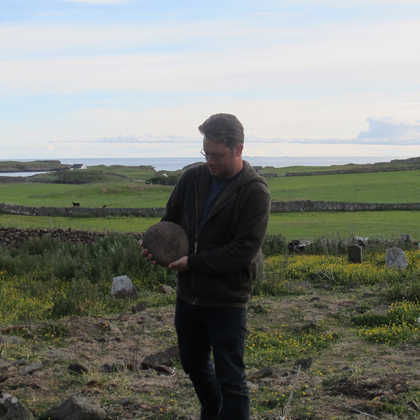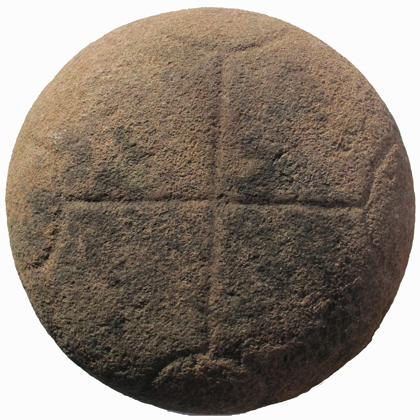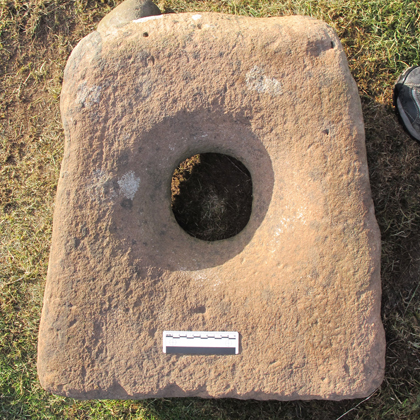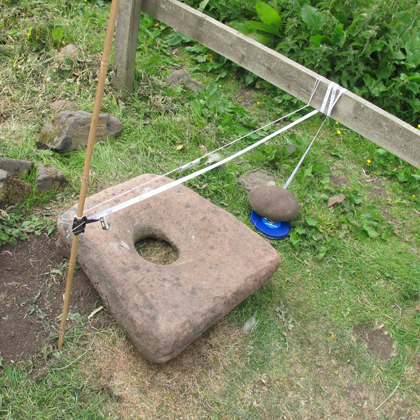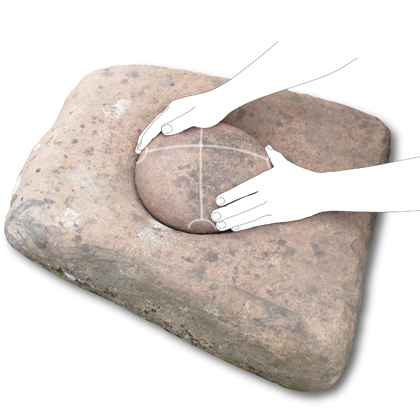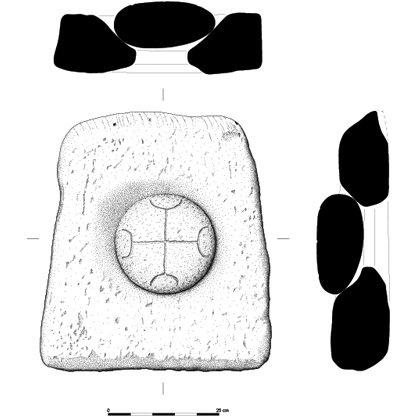Keill Stone, Isle of Canna, Small Isles
Summer 2013
When I was asked by the National Trust for Scotland to travel to the Isle of Canna to illustrate their recently discovered prayer stone, it was an opportunity not to be missed. The significance of the find lies in the fact that it matches a lower bullaun stone which the managers upon Canna have always been aware of, and when the prayer stone was discovered it was a revelatory moment once it was slotted into place. Several matching pairs are known to exist in Ireland, yet this is the first to be uncovered within Scotland.
It is believed the hollow stones, known as bullaun stones, were deliberately created to hold prayer stones that could then be rotated by worshippers in accordance with the cosmic movement of the sun. Similarly, another stone with a sharply defined hollow is believed to hold ritual significance, being used to wash the feet of pilgrims. The similarity of both the washing stone to quern stones, and the bullaun stone to neolithic cup-marked stones is no coincidence, and represents the christianisation of earlier prehistoric objects that were employed by Columba and others in converting the local population.
You can read more about the discovery on the BBC news website here.


